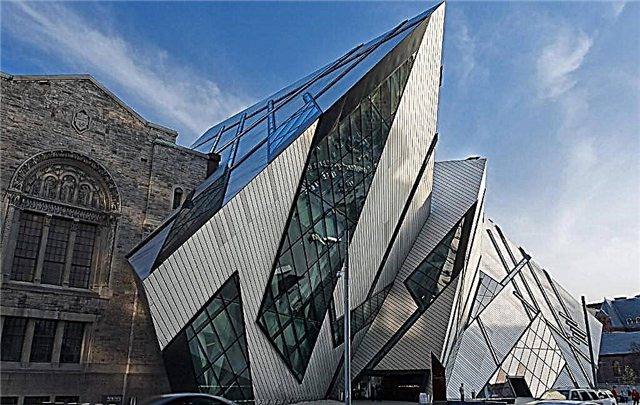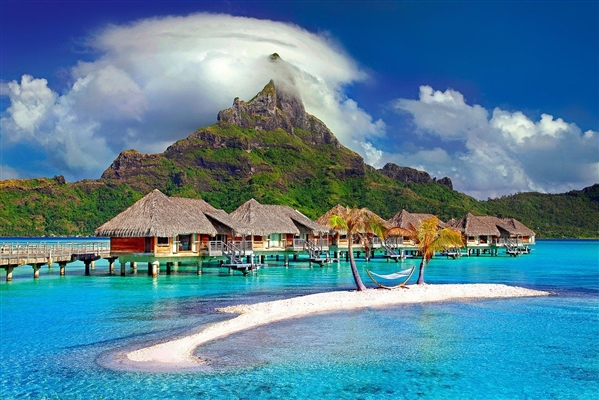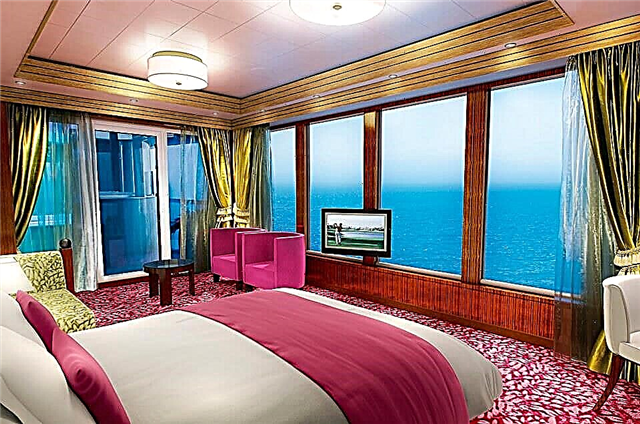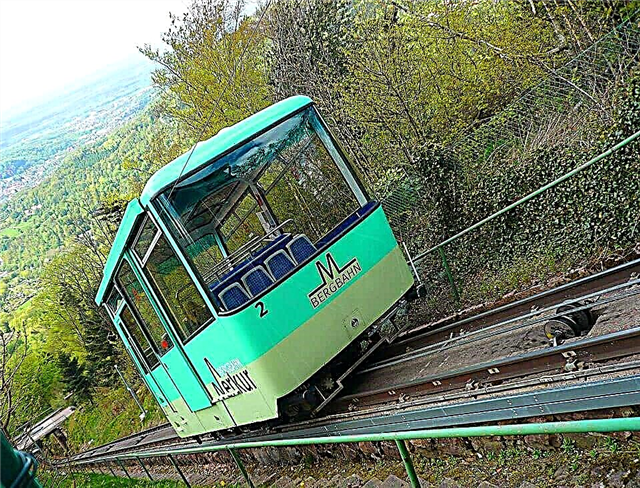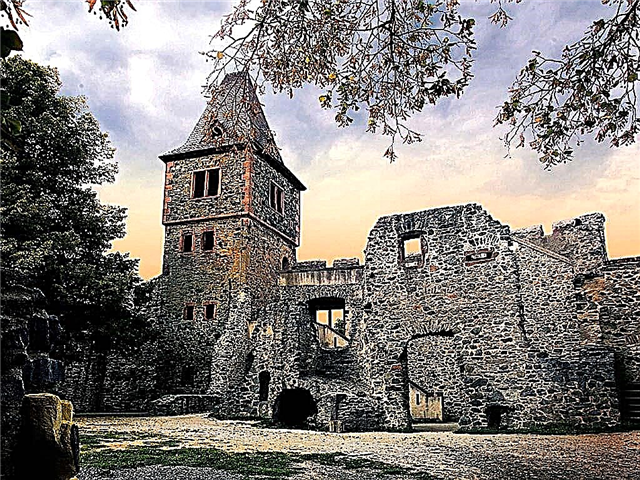Address: France, commune Rigny-Usev, 35 km west of Tours
Completion of construction: XV century
Main attractions: Chapel of Notre Dame de Collegiale (1538), wine cellars (15th century), stables, guard room, attic, interior decoration of the castle, episodes of the fairy tale "Sleeping Beauty" are recreated in the rooms of the castle
Coordinates: 47 ° 14′59 ″ N, 0 ° 17′28 ″ E
Content:
List of castles of the Loire
Short description
All travelers who have visited romantic and sophisticated France, without exception, talk about the magnificent castles of the Loire with admiration.
"A fertile place for a man" - this is the name of the famous Loire Valley with its huge number of palaces, castles and residences that previously belonged to the French monarchs and the richest county dynasties. Among all these old buildings, each of which is a unique architectural masterpiece, the Yusse Castle stands out, more reminiscent of a fairytale palace.

A bird's eye view of Yusse Castle
If you look at the statistics of travel agencies organizing excursions to the castles of the Loire, you can draw a certain conclusion: Yousse does not cause such interest among tourists as, for example, Blois or Chenonceau. To look at its amazing architecture, rich interior decoration and a real fairy tale, "only" 500,000 people come a year.
One has only to look at the photo of the castle of Yousset, and the question immediately arises: "Why is this fabulous palace less popular than other castles of the Loire?" The point is not that there is nothing to see in Jousse. On the contrary, inside this castle, everyone, without exception, has the impression that in some unimaginable way a fairy tale has come to life in this place! And these are not just catchy words in some rooms of the Yusse castle, an evil witch, a handsome prince and a real ... sleeping beauty still "live"... Alas, for three months a year this amazing architectural masterpiece, built in the dark Middle Ages, is closed to tourists. Moreover, the castle of Yusse, which is almost impossible to assess in monetary terms, does not belong to the state, but is privately owned.

View of the facade of the castle of Usse
Since 1885, this magnificent architectural monument has been owned by the ancient dynasty of the Dukes de Blac. They kindly allow guests to admire the luxury of the interior (with the exception of some rooms), walk in the magic garden and listen to great music during the excursion ... by Pyotr Ilyich Tchaikovsky. It is precisely because the castle is privately owned that "only" half a million travelers come to it a year.
In their demands, the Dukes of Blac indicated that they would not like to see huge crowds of tourists on their estate: the groups should be small, and the number of guests visiting Yousset on their own should be limited. It is, of course, necessary to respect the desire of people who, for the most part, at their own expense, maintain the castle in its original form. By the way, despite the fact that Yusset is privately owned, since 1861 it has been included in the list of sights of France under state protection. In the 19th century, Prosper Merimee himself applied for the inclusion of the castle in the state register of historical and architectural monuments.

North-east side of the castle of Usse
Yousse castle: construction and a little history
All official documents mention that the castle of Yusset was built in the Loire Valley on the banks of the Indre River in the middle of the 15th century. However, numerous results of research by archaeologists suggest the opposite: as early as the 6th century AD, it was on this place that the Yusserum fortress stood. Only after passing this fortification could one get to Tours and Chinon. The legendary family of Blois is inextricably linked with this ancient fortress, or rather, it was here that its first representative lived.
Probably, most people, when they mention the Blois dynasty, imagine refined counts, dukes and kings. Naturally, this is so. But the first person who became the ancestor of the future rulers of France was far from a romantic image, moreover, he had nothing to do with the Franks at all! In the early 1000s, an unkempt, cruel and bloodthirsty Viking named Gueldun lived in a wooden fortress. For the torture that he subjected his captive enemies and the local population, he even received the terrifying nickname Devil Saumur. This was the first representative of the famous Blois family, which in the future played a key role in the formation of France. In 1040, on the site of a wooden fortress, a powerful stone fortification was built, built by the heir of the Devil Saumur Gueldun II.

View of the castle of Yousse from the garden
The son of the ancestor of the Blois dynasty was practically no different from his father: the annals even say that he absorbed all the worst that his ancestor had. By and large, Guelduen the First did not have any good qualities.
It is endless to talk about sieges and battles near the ancient fortress. The best solution would be to "travel" immediately to the 15th century. At the time when the castle appeared, the architectural style of which can be enjoyed by a modern visitor of the Loire Valley. In 1460, the castle, which could still be called an impregnable fortress, was inherited by Antoine d'Yusset. Together with the dilapidated fortification, he gets huge unpaid debts from his father. The castle would have been immediately sold, but then the daughter of King Charles himself fell in love with the young man, though illegitimate. Her father collected a huge dowry for the young couple, at that time - just over 40,000 gold pieces! It would seem that the lovers had to equip their estate and live happily in the castle until the end of their days. However, Antoine did not live up to the hopes of the king and his unfortunate daughter: as soon as d'Ussay got access to gold, he immediately began to lead a riotous life. The dowry was spent on orgies, revelry and girls of easy virtue for almost 20 years.

Yusse Castle courtyard
In 1485, the castle passed into the possession of a serious and visionary courtier, Jacques de'Espine. By his order, the destroyed fortress was not only restored, it was almost completely rebuilt and a beautiful late Gothic chapel was erected on the adjacent territory. From 1520 to 1540, the castle of Yusse takes on the form in which it has survived to this day.... The northern part of the fortress was demolished, and expensive tapestries, paintings and furniture made of precious woods appeared in all the interior rooms.
The castle even houses luxurious chambers for the king, who could look in Yusse during his travels. In fairness, it should be noted that not a single monarch has ever visited the beautiful castle-palace. Although, to be very precise, the Yousse palace became only in the middle of the 17th century. At a time when a beautiful garden, a greenhouse and a huge park were laid out around it. The landscape surrounding the castle was personally designed by André Le Nôtre, who became famous for his projects for parks in Chantilly, Fontainebleau, Versailles and in Saint-Germain Palace.

View of the castle of Yousse
Yousset: Charles Perrault and the Royalist Plots
The seventeenth century became a landmark for the Yusse castle. Naturally, Le Nôtre played a huge role in this, but the popularity of the castle appeared thanks to the famous writer-storyteller ... Charles Perrault! Passing by the summer palace, Yousse Perrault could not resist and shouted enthusiastically: “This is the most beautiful castle that I have ever seen in my life!”. These were not just loud words, the palace gave inspiration to the storyteller, and immediately after his visit he wrote one of the most famous fairy tales in the world "The Sleeping Beauty".All descriptions of the palace in this work exactly correspond to the interior decoration of the Yusse castle. Moreover, even the outer facade of the fairytale palace, where the beautiful girl fell asleep, is identical to the castle in the Loire Valley.
At the time when Napoleon Bonaparte came to power, royalists gathered in the castle of Yusset, as well as in many other castles of the Loire Valley. At night they made plans to overthrow the emperor and restore the monarchy in France. Many of them were later captured and executed, some of them hid in deep forests before Napoleon's exile and terrified the local population with their forays. Yusse Castle, unlike other palaces, escaped looting and destruction during the revolution.

West wing of the castle of Usse
Even the angry crowd, like the kings they hated, did not pay attention to the lonely fairytale palace in which the sleeping beauty woke up from eternal sleep. ... As mentioned above, in 1885, Yusset became the property of the dukes de Blac. This dynasty is still proud of its estate and does everything possible to preserve it in its original form for posterity.
Guided tour of the Yousse castle
On the way to the Yousse castle, almost all tourists have the feeling that this architectural masterpiece is not particularly welcome. This impression is deceiving, it appears because of the strict lines of the facade, inherent, as you might guess, in the Gothic style. When the castle was being rebuilt, the Gothic style no longer inspired architects: in Europe, all attention was paid to the luxurious Renaissance. One has only to pass the gates of Yousse, as immediately the guest of the summer palace freezes from the splendor and wealth of the park, in which Lebanese cedars are still preserved, supposedly planted personally by François René de Chateaubriand, who wrote the famous "Burial Notes" during the royalist conspiracies.

View of the castle garden and the bridge over the Indre river
The first building to be seen during the tour is the Gothic-style chapel, built, as mentioned above, by Jacques de'Espine. At the entrance to it you can see the capital letters of the names of the courtier's son and his wife. Directly above the main entrance to the chapel, four rather frightening medallions with images of dead babies are carved on the wall; at one time they served as a reminder that no one is eternal on this earth. Before visiting the castle itself, the best solution is to go to its wine cellar. This room is quite large and still contains bottles of wine that was bottled in the 18th century. In addition to ancient bottles, guests of the Yousse castle can also see barrels with a young intoxicating drink: a grape variety called Chenin Blanc for its preparation is still grown on the Belvedere hill. All travelers who have covered a distance of 300 kilometers from Paris (more precisely, from Notre Dame Cathedral) will also be interested in the stable. The Dukes of de Blac do not keep expensive horses there these days, but the collection of carts and horse care items is impressive.

Yusse Castle Garden
Directly in the castle of Yusse, tourists will be curious to inspect any room that is open to access. Luxurious furniture, a collection of edged weapons, tapestries that adorn the corridors and dated back to the 18th century - all this speaks of the wealth of dynasties that owned a fabulous palace at different times. The palace is called fabulous in numerous tourist avenues not only because it became the inspiration for Charles Perrault. Characters from the famous fairy tale "live" in many rooms of the castle! More precisely, an evil witch, a beautiful girl and a noble prince are made of wax. In each of the "fairy rooms" you can see a certain scene from the work of Charles Perrault: a witch sits at a spinning wheel, a little girl surrounded by her father-king and mother-queen, a girl pricked her finger, a brave prince kisses a sleeping beauty. By the way, in the largest halls you can find many more wax figures: they do not belong to a fairy tale. These are court ladies, dukes and even footmen, dressed in costumes of the 17-18 centuries.

Castle dining room
Yousse Palace: a note for the traveler
As mentioned almost at the very beginning of this material about the magnificent castle of the Loire, this building is privately owned by the Dukes de Blac. From November 11 to mid-February, it is closed for visits: at this time, restoration work is being carried out there. The first excursion groups have been allowed to visit the Yusse castle from 13 February. Before the start of the season (from April 1 to August 31), the summer palace is open from 10 am to 6 pm... In the summer, it works an hour longer. Before traveling to the Sleeping Beauty Castle, remember that ticket sales stop exactly one hour before the closing of Yousse.
An adult can enjoy the splendor of one of the most amazing castles of the Loire for 18 euros, and children and adolescents up to 16 years old for only 4 euros. It is most profitable to come to Jousse as part of an excursion group: in this case, a ticket to the castle for an adult will cost 7 euros. All guests are offered brochures describing the history of the castle and its architectural features. By the way, such colorful and interesting guidebooks are also published in Russian.

Chapel of the castle of Usse
During the excursions, the music of P.I. Tchaikovsky from the ballet The Sleeping Beauty. In the castle of Yousse, the dukes also organize open days, when you can get to the summer palace absolutely free of charge.


